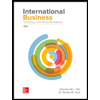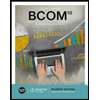
Tracking employee information through global positioning system (GPS)−in particular, on company vehicles driven by employee-is becoming commonplace. Location information is transmitted to a server via the cell phone network (and sometimes via satellite phone service) and is then available to the company through the web or mobile apps.
As the cost of GPS drops and the number of mobile workers rises−by some accounts, to as much as 75 percent of the workplace by 2020−companies are depending on GPS to monitor the movement of and products to improve customer service and help with time management. "I wanted to see how much time was spent on each job, says one small business owner with a fleet of seven vehicles. "We've had a few problems the past—people weren't where they said they'd be. With GPS, we can defend to the customers. We know how fast the drivers drove, what route they took, and how long they spent on each job." Late in 2017, four wastewater plant mechanics employed by the city or Modesto, California, fired after GPS showed they used "work hours to socialize at the lift stations with (each other), go home, shop, sleep and drive around in the City utility vehicle."
Companies are not only tracking vehicle, but many now track employees through their mobile phones. Understandably, many employees don't like the idea of Big Brother following their every move; most states allow employees to track their employee's location even in off hours. Many employees take their company vehicle home after their shifts, but even employees with company-owned phones may be tracked about hours, too.
Survey show that many GPS-tracked employees have serious concerns about after-hours tracking, micromanagement, and privacy [https://tsheets.com/gps-survey]. In 2015, a woman in California sued her employer, claiming that she was tracked 24 hours a day through her company-issued iPhone. And when she uninstalled the tracking apps, she was fired.
Using a web search tool, locate article about this topic, and then write responses to the following questions. Be sure to support your arguments and cite your sources.
Ethical Dilemma: Do GPS devices constitute an invasion of employee privacy? Are there guidelines companies can develop for appropriate GPS use?
Sources: Kevin Valine, "Modesto Disciplines Sewer Workers for Goofing Off," The Modesto Bee, http://www.modbee.com, Janunary 1, 2018; Keveh Waddell, "Why Bosses Can Track Their Employees 24/7," The Atlantic, http://www.theatlantic.com. January 6, 2017; Andrew Burger, "IDC: Mobile workers Will Make up Nearly 75 percent of U.S. Workforce," http://www.telecompetitor.com, June 23, 2015, David Kravets, "Worker Fired for Disabling GPS App That Tracked Her 24 Hours a Day." Ars Technica, https://arstechica.com , May 11, 2015.
To explain:
Whether it is ethical to use GPS services and other technologies to track an employee's behavior, the guidelines a company should develop to ensure appropriate use of GPS.
Introduction:
The concept of ethics stands in between the two extremes of codified law and personal freedom. It refers to what is as correct behavior based on the society's interpretation. When the society interprets things differently, what was once the standard for ethics can change over time, for example, slavery in the 18th century or smoking in the 19th century.
Explanation of Solution
The use of tracking employees is a clear example of a situation where everything that is ethical is not always be legal. While it might not be illegal to track your employees during work hours and sometimes even after work hours given, they are using company property, it can be considered as unethical behavior by many.
From the organizations point of view, they have the right to know how their resources are being managed (company vehicle, and phones) and therefore can justify the monitoring and tracking the activities of the employees, they can be more efficient in resource management.
However, from the employee's point of view they would consider this as an invasion of their privacy and would affect the relationship between employee and employer. Employee would argue that this gives the employer an access to information that they do not wish to share and that the employer is creeping in their personal lives.
The following articles would outline the case for and against tracking employees using GPS and other services. While there are some strong points to back the argument from employers, it must be said that the employees do have a right not to be interfered in their private life. Therefore, the challenge is going to be to find a balance between how one could manage employee activity without crossing boundaries.
This is where clear guidelines and procedures would come in with the help of technology. Employees needs to communicate clearly on when, how and why they would be tracked. If anyone is unhappy with the policy they can raise their concerns and maybe not use company property. Employees should be given the opportunity to decide for themselves on whether to get involved or not. The company should always act according to the communicated guidelines.
Want to see more full solutions like this?
Chapter 8 Solutions
Introduction to Business
Additional Business Textbook Solutions
Principles of Management
Horngren's Accounting (11th Edition)
Principles of Accounting Volume 2
Cost Accounting (15th Edition)
Horngren's Accounting (12th Edition)
Construction Accounting And Financial Management (4th Edition)
- Strategic staffing is a critical component of effective human resource management, endompassing the acquisition, deployment, and retention of the right talent. It involves aligning the skills and competencies of employees with the organizational goals and ensuring that the workforce is both adequate and flexible to meet evolving business needs. Successful staffing requires a thorough understanding of the organization's short-term and long-term objectives, as well as the ability to forecast future talent requirements. In addition to recruitment, staffing also involves training and development initiatives to enhance the skills of existing staff and ensure they stay abreast of industry trends. A strategic approach to staffing contributes not only to the immediate operational needs of the organization but also to its long-term sustainability and competitiveness. Question: How can organizations develop and implement a strategic staffing plan that anticipates future talent needs and aligns…arrow_forwardWhat is the underlying problem in this case from the perspective of a hospital administration? What role do you believe hospital administrators have played in contributing to nursing shortages and high nurse turnover? What could hospitals do to create a realistic job preview before new nurses accept a position? How do you think this might help with nurse retention? What type of training or development might hospitals offer to help reduce nurse turnover?arrow_forwardAn electrical contractor's records during the last five weeks indicate the number of job requests: Week: Requests: 1 2 3 25 27 25 4 26 57 27arrow_forward
- In addition to its foundational role in assembling a competent workforce, staffing also plays a pivotal role in adapting to the evolving needs of a business environment. It involves anticipating changes in the industry landscape, technological advancements, and shifts in consumer preferences. Proactive staffing strategies not only respond to immediate talent requirements but also position organizations to stay agile and competitive in the long run. This adaptability is crucial in a rapidly changing world, where the ability to quickly identify, recruit, and develop the right talent can be a key differentiator. Moreover, an effective staffing approach is not confined to the recruitment phase but extends to continuous development, training, and performance management, ensuring that employees are equipped with the skills needed to navigate the challenges of an ever-changing business environment. Question: How does organization incorporate flexibility and adaptability into its staffing…arrow_forwardWhen and how offline workers may utilize the system.arrow_forwardINSTRUCTIONS: ANSWER THE FOLLOWING QUESTION EITH YOUR OWN UNDERSTANDING Five Trends that Are Dramatically Changing Work and the Workplace EXPLAIN EACH TREND AND CREATE YOUR OWN SCENARIO OF EACH TRENDSarrow_forward
- Critically discuss the consequences Covid – 19 has had on the challenge of a changing workforce.arrow_forwardYour workforce in the sales department consist of 30 workers. 10 are baby boomers born between 1945 and 1964, 10 are Generation X born 1965-1980, and 10 Generation Y born 1981-2000. You are installing a computerized system. This will replace the old system of hand written reports and phone call generated leads. This new system will generate sales leads, require all reports to be made on mobile devices and the system will operate 24/7. How do you expect each age group to respond and how do you overcome obstacles? Be specific.arrow_forwardReaction to essay below. Do you agree or disagree? Any additional thought? The hospital human resource (HR) manager plays a crucial role in the smooth functioning of the hospital. They ensure that all human resource functions are carried out according to regulations and contribute to a positive work environment for all employees. The Human Resources department plays a crucial role in ensuring that the hospital maintains compliance with all pertinent state and federal regulations regarding employee hiring, firing, compensation, benefits, and other related human resource matters. Two theories that can be used in this work environment are the scientific management theory and the knowledge management theory. The scientific management theory can be used in almost any human resources department. This theory assigns workers to tasks that are based on their natural skill sets. Tasks can be separated into employee hiring, benefits, and work-related human resource problems. This in turn…arrow_forward
- As an Analytics Specialist for a private sector organisation, how do you develop a focused analytics Dashboard that deals with strategy and HR in this organisation that supports the executives and senior members of the management team of the organisation with the execution of strategic decisionsarrow_forwardIdentify two specific training techniques/ methods that you would use to train employee(s) in the following situations. Ensure the answer identifies a specific training method/ technique that is appropriate to each situation/job. a. A sales clerk at a local retail location. b. An assembly line worker at Ford Motor Company. c. Train current employees on newly implement software system.arrow_forwardThe role of human resources (HR) has continually changed over the past century to reflect the ever-evolving workplace. Once referred to as the “personnel” department, businesses switched over to “human resources” to reflect the department’s dedication to the inherent human element of managing employees to maintain and foster satisfaction and loyalty. To stay current and relevant, consider the following ways the field of human resources is changing. Recruitment and Hiring Employee Engagement Training and Development Performance Management and Evaluations The Dynamics of HR Itself Choose one function to discuss clearly.arrow_forward
 BUSN 11 Introduction to Business Student EditionBusinessISBN:9781337407137Author:KellyPublisher:Cengage Learning
BUSN 11 Introduction to Business Student EditionBusinessISBN:9781337407137Author:KellyPublisher:Cengage Learning Essentials of Business Communication (MindTap Cou...BusinessISBN:9781337386494Author:Mary Ellen Guffey, Dana LoewyPublisher:Cengage Learning
Essentials of Business Communication (MindTap Cou...BusinessISBN:9781337386494Author:Mary Ellen Guffey, Dana LoewyPublisher:Cengage Learning Accounting Information Systems (14th Edition)BusinessISBN:9780134474021Author:Marshall B. Romney, Paul J. SteinbartPublisher:PEARSON
Accounting Information Systems (14th Edition)BusinessISBN:9780134474021Author:Marshall B. Romney, Paul J. SteinbartPublisher:PEARSON
 International Business: Competing in the Global M...BusinessISBN:9781259929441Author:Charles W. L. Hill Dr, G. Tomas M. HultPublisher:McGraw-Hill Education
International Business: Competing in the Global M...BusinessISBN:9781259929441Author:Charles W. L. Hill Dr, G. Tomas M. HultPublisher:McGraw-Hill Education





